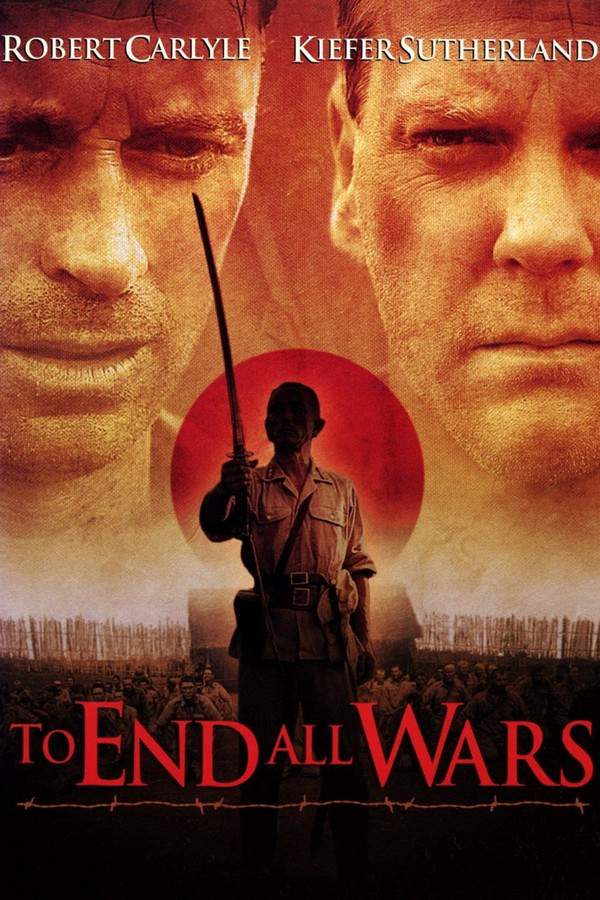
The Camp on Blood Island
Year: 1958
Runtime: 81 mins
Language: English
Director: Val Guest
Set in a Japanese POW camp during World II, the film portrays the brutal reality faced by Allied prisoners as they endure harsh subjugation and punishment. The harrowing drama examines the clash of legal and moral codes between two cultures, highlighting the severe suffering endured. Though fictional, it was among the earliest movies to depict life and death in a Japanese camp with stark realism.
Warning: spoilers below!
Haven’t seen The Camp on Blood Island yet? This summary contains major spoilers. Bookmark the page, watch the movie, and come back for the full breakdown. If you're ready, scroll on and relive the story!
The Camp on Blood Island (1958) – Full Plot Summary & Ending Explained
Read the complete plot breakdown of The Camp on Blood Island (1958), including all key story events, major twists, and the ending explained in detail. Discover what really happened—and what it all means.
Emperor Hirohito’s surrender to the Allies is announced on August 15, 1945, across the Empire, signaling the end of the Pacific War. Yet at Blood Island, the news has not reached the Japanese guards and inmates. The camp’s commandant Col. Yamamitsu, Ronald Radd, has already told senior Allied officer Col. Lambert, André Morell, that he will order the massacre of the entire camp—including the nearby women’s camp—if Japan surrenders. The knowledge of the war’s end remains a secret among most of the prisoners, except for Piet Van Elst, Carl Möhner, a Dutch former rubber planter who has managed to learn the truth through a hidden radio receiver. Lambert, who bears the burden of leadership, chooses not to disclose the truth to the others, believing they must act to thwart the impending massacre.
Lambert decides on a risky plan to prevent the Japanese from discovering the truth. He sabotages the enemy radio and tasks Dr. Robert Keiller, Richard Wordsworth, with reaching a Malay village so that partisans can relay a message to the Allies. This dangerous course triggers brutal reprisals from the Japanese, and the prisoners must navigate the consequences while the truth remains elusive to most inmates. Beattie, Walter Fitzgerald, a former governor who has returned to the island, weighs in with his perspective, while Father Paul Anjou, Michael Goodliffe, quietly assists by delivering Latin burial rites and communicating in ways the guards do not understand. The tension between Lambert’s caution and Beattie’s pragmatism runs through the camp as everyone tries to hold together under impossible pressure.
Meanwhile, a U.S. Navy plane crashes on the island, and pilot Lt. Commander Peter Bellamy, Phil Brown, flags down a Japanese truck to seek a way to convey the truth. Keiller is being transported in the same vehicle and manages to urge Bellamy not to reveal that the war is over. The truck stops at the women’s camp, and Keiller is shot dead, leaving Bellamy to shoulder a heavier burden. Back at the men’s camp, Bellamy is captured and beaten but refuses to divulge the information. The Allies’ view remains incomplete, and the Malay resistance remains unaware of how close they are to the truth.
The mission to communicate with the Malay village falters when Anjou’s efforts to relay a message through Mrs. Beattie fail; the burial service and the Latin language create further barriers to disclosure. In a desperate bid, Bellamy and Piet Van Elst escape from a labor detail and manage to seize a truck, aiming to reunite with Kate Keiller, Barbara Shelley. Kate, who is in the women’s camp, is discovered to be a crucial link to the truth, and Bellamy’s plan becomes a race against time to reach her and alert the outside world. Dutch is killed while trying to hold back guards, but Bellamy and Kate eventually reach a Malay village to warn the Allies.
Back at the camp, Lambert updates the NCOs about the deteriorating situation. With the threat looming and the possibility that the escapees have reached the Malay village uncertain, he orders the men to arm themselves with whatever small weapons they can find. The following day, the Japanese return with Dutch’s body and take six more prisoners, including Major Dawes, from the officers’ hut. Beattie seeks an audience with Captain Sakamura, Marne Maitland, hoping to convey something vital, but a grenade detonates in a tense moment, killing Sakamura and Yamamitsu. The prisoners mount a chaotic counterattack, and in the confusion, Lambert accidentally kills Tom Shields, Michael Gwynn, who had seized a Japanese machine gun in a tower. In a final, decisive moment, Lambert hurls a grenade into the tower, mistaking a Japanese shooter for the threat, as Allied paratroopers finally descend to overwhelm the camp. The fighting ends, and the women’s camp is taken with no shots fired, leaving many men dead but ensuring the safety of the surviving women and children.
Throughout the ordeal, the camp’s dynamics hinge on the voices and decisions of a few key figures. Col. Yamamitsu’s hard line and Lambert’s guarded leadership set the stage for every risky move, while Beattie’s insistence on telling the truth tests both the wits and the courage of those who refuse to surrender under duress. Keiller’s sacrifice and Bellamy’s steadfast resolve drive the effort to reach the Malay village, where the truth can finally reach those who can act on it. Kate Keiller’s role, as the camp’s link to outside help, underscores the fragile thread that ties the prisoners’ fate to a broader world that has already ended its war, but still must respond to the danger that lingers on Blood Island.
Last Updated: October 09, 2025 at 11:01
Unlock the Full Story of The Camp on Blood Island
Don't stop at just watching — explore The Camp on Blood Island in full detail. From the complete plot summary and scene-by-scene timeline to character breakdowns, thematic analysis, and a deep dive into the ending — every page helps you truly understand what The Camp on Blood Island is all about. Plus, discover what's next after the movie.
The Camp on Blood Island Timeline
Track the full timeline of The Camp on Blood Island with every major event arranged chronologically. Perfect for decoding non-linear storytelling, flashbacks, or parallel narratives with a clear scene-by-scene breakdown.

Similar Movies to The Camp on Blood Island
Discover movies like The Camp on Blood Island that share similar genres, themes, and storytelling elements. Whether you’re drawn to the atmosphere, character arcs, or plot structure, these curated recommendations will help you explore more films you’ll love.
Explore More About Movie The Camp on Blood Island
The Camp on Blood Island (1958) Scene-by-Scene Movie Timeline
The Camp on Blood Island (1958) Movie Characters, Themes & Settings
The Camp on Blood Island (1958) Spoiler-Free Summary & Key Flow
Movies Like The Camp on Blood Island – Similar Titles You’ll Enjoy
The Battleship Island (2017) Film Overview & Timeline
To End All Wars (2002) Full Summary & Key Details
Blood Oath (1990) Detailed Story Recap
Island of Blood (1982) Movie Recap & Themes
Men Behind the Sun (1988) Movie Recap & Themes
Prisoner of War (1954) Ending Explained & Film Insights
Battle of Blood Island (1960) Full Movie Breakdown
Yesterday’s Enemy (1959) Plot Summary & Ending Explained
Island of Doomed Men (1940) Plot Summary & Ending Explained
Beach Red (1967) Film Overview & Timeline
Blood on the Sun (1945) Film Overview & Timeline
Island of Horrors (1970) Detailed Story Recap
The Island on Bird Street (1997) Complete Plot Breakdown
Blood and Steel (1959) Spoiler-Packed Plot Recap
Hell in the Pacific (1968) Complete Plot Breakdown

















